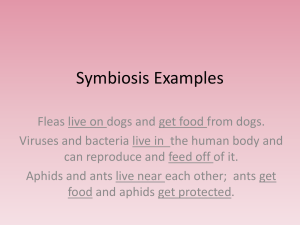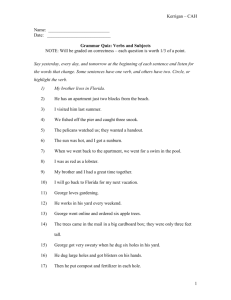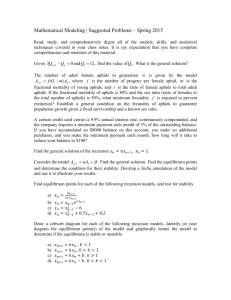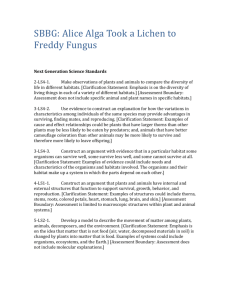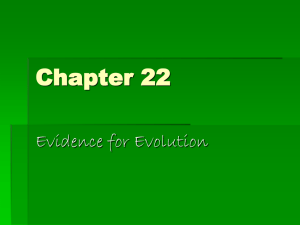Content Focus F and G
advertisement
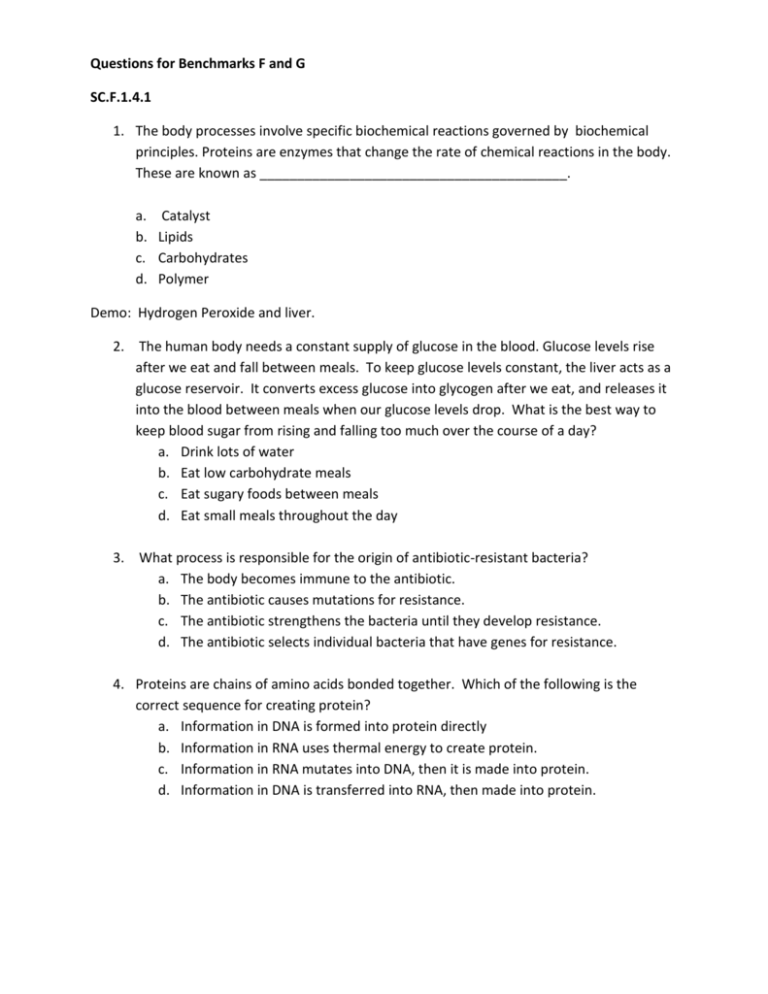
Questions for Benchmarks F and G SC.F.1.4.1 1. The body processes involve specific biochemical reactions governed by biochemical principles. Proteins are enzymes that change the rate of chemical reactions in the body. These are known as _________________________________________. a. b. c. d. Catalyst Lipids Carbohydrates Polymer Demo: Hydrogen Peroxide and liver. 2. The human body needs a constant supply of glucose in the blood. Glucose levels rise after we eat and fall between meals. To keep glucose levels constant, the liver acts as a glucose reservoir. It converts excess glucose into glycogen after we eat, and releases it into the blood between meals when our glucose levels drop. What is the best way to keep blood sugar from rising and falling too much over the course of a day? a. Drink lots of water b. Eat low carbohydrate meals c. Eat sugary foods between meals d. Eat small meals throughout the day 3. What process is responsible for the origin of antibiotic-resistant bacteria? a. The body becomes immune to the antibiotic. b. The antibiotic causes mutations for resistance. c. The antibiotic strengthens the bacteria until they develop resistance. d. The antibiotic selects individual bacteria that have genes for resistance. 4. Proteins are chains of amino acids bonded together. Which of the following is the correct sequence for creating protein? a. Information in DNA is formed into protein directly b. Information in RNA uses thermal energy to create protein. c. Information in RNA mutates into DNA, then it is made into protein. d. Information in DNA is transferred into RNA, then made into protein. SC.F.2.4.3 1. Studies from 1830 indicated that a remote island chain in the Pacific Ocean had 13 separate species of finches. Each finch species had a distinctive beak shape that was specialized for eating a particular types of food. In spite of these differences, there were strong similarities shared by the finches. A scientist hypothesized that the 13 species of finches descended from a common ancestor. Which of the following factors produced variation in the finch species? a. Natural Selection b. Extinction c. Overpopulation d. Artificial selection 2. Natural selection acts by taking advantage of natural variations in the traits of organisms within a population. What is the ultimate source of this variation? a. Changes in the environment b. Mutations within the genetic code c. Response to a need of the organism d. Response to the stress of competition 3. What factor will prevent a population from adapting to changing conditions in its environment through natural selection? a. Mutations b. Competition c. Short life span d. No genetic variation 4. In England before the 1850s, most peppered moths were light colored. They blended into the bark of trees covered in light-colored lichens and so were camouflaged from predators. Soon after that time soot from the factories near the cites began to cover the trees and kill the lichens. Scientists then noticed there were more dark-colored moths than light ones. What can you conclude from the change in the number of darkcolored peppered moths? a. The dark moths survived by being covered in soot. b. The darker moths were able to pass on their genes, while the light colored moths were not. c. The light-colored moths were more sensitive to pollution and stopped passing on their color genes. d. There was a lot of color variation in the population of peppered moth, but now only the dark ones can be seen. SC.G.1.4.1 1. In an ocean food web, seals feed on cod, which in turn feed on tiny krill. In addition fishermen catch thousands of kilograms of cod each day. How might cod fishing affect the population krill? ____________________________________________________________________________ ___________________________________________________________________________ __________________________________________________________________________ 2. Cattle egrets hunt for insects where cape buffalo graze. The buffalo stir up insects as they walk, allowing the egrets to catch them more easily. What is the relationship between cattle egrets and cape buffalo? a. The relationship is a form of predation. b. The relationship is a form of parasitism c. The relationship is a form of competition d. The relationship is a form of commensalism 3. Aphids are small insects that feed on plant juices. They secrete some of these juices as a substance called honeydew, which ants use for food. In return, the ants guard the honeydew-producing aphids. What kind of relationship do the ants and aphids have? a. Commensalism b. Mutualism c. Parasitism d. Predation 4. Describe the food web between the organism listed below. Identify each one as a producer, decomposer, or consumer. Your food web description also should include the flow of energy from each organism. Food web organisms: Species Population Community Similar S.C.G.2.4.2 1. The logging industry provides jobs for loggers, tree cutters, paper mill workers, and provides products like paper, turpentine, furniture and many components of other products. What types of environmental problem might logging cause? _____________________________________________________________ _____________________________________________________________ _____________________________________________________________ What are some solutions to these problems? 2. When does secondary succession of an organism type occur in an ecosystem? a. when there is no soil in an area occupied by life immediately after a volcanic eruption on an island. b. immediately after a volcanic eruption on an island c. after older forests die out and are replaced by new forests d. immediately after an area of rock is exposed by melting ice. 3. Lichens are a group of non-vascular plants composed of fungal and algal species growing in a symbiotic relationship. If you were to add more algae-eating fish into a pond containing lichens, what would you expect to see? a. The population of both lichens and algae-eating fish would not change. b. The population of lichens would increase because they live off fungi and algae. c. the population of lichens would decrease due to the reduction of algae in the area. d. The population of algae-eating fish would increase since the fish can eat the lichens. 4. A pond is an example of an ecosystem. If the top predator in the pond were to die off due to disease what effect might this have on the population of other organisms? SC.F.1.4.1 Mini Assessments SCF.141 1. What is the role of an enzyme? a. To act as a polymer. b. To build carbohydrates c. To speed up chemical reactions. d. To store on fatty acids. 2. Cattle egrets hunt for insects where cape buffalo graze. The buffalo stir up insects as they walk, allowing the egret to catch them more easily. What is the relationship between cattle egrets and cape buffalo? a. The relationship is a form of predation b. The relationship is a form of parasitism c. The relationship is a form of competition d. The relationship is a form of commensalism 3. Aphids are small insects that feed on plant juices. They secrete some of these juices as a substance called honey dew, which ants use for food. In return, the ants guard the honeydew-producing aphids. What kind of relationship do the ants and aphids have? a. Commensalism b. Mutualism c. Parasitism d. Predation SCF243 4. There are deer in a valley. Several deer have made it up into the nearby mountains. Over several generations the majority of mountain deer have long, warm fur. What is this the result of? a. Natural Selection b. Extinction c. Overpopulation d. Artificial selection 5. Studies from 1830 indicated that a remote island chain in the Pacific Ocean had 13 separate species of finches. Each finch species had a distinctive beak shape that was specialized for eating a particular types of food. In spite of these differences, there were strong similarities shared by the finches. A scientist hypothesized that the 13 species of finches descended from a common ancestor. Which of the following factors produced variation in the finch species? e. Natural Selection f. Extinction g. Overpopulation h. Artificial selection 5. Natural selection acts by taking advantage of natural variations in the traits of organisms within a population. What is the ultimate source of this variation? a. Changes in the environment b. Mutations within the genetic code c. Response to a need of the organism d. Response to the stress of competition for food. SC.G1.4.1 1. In an ocean food web, seals feed on cod, which in turn feed on tiny krill. In addition fishermen catch thousands of kilograms of cod each day. How might cod fishing affect the population krill? e. Increase it f. Decrease it g. Stays the same h. None of the above 6. Animals depend on plants to release oxygen through photosynthesis. Plants are also food sources for many animal . If the plants in an ecosystem were to die out, which of the following would NOT be a result? a. Oxygen levels would become lower. b. Animals would have greater competition c. The population of animals would increase d. Some animal species would starve to death. 7. Which of the following describes energy and matter in ecosystems? a. Both energy and matter are completely recycled b. Matter recycles, but some energy is transferred c. Energy is recycled, but most matter is lost d. Both matter and energy are completely lost 8. The removal of which of the following would have the biggest impact on a marine ecosystem? a. Fishes b. Whales c. Shrimp d. Plankton 9. An undersea volcano erupts, creating a new island in the Gulf of Mexico. Life slowly starts to appear on the island. What would probably be the first species to tke hold and survive? a. Ferns b. Finches c. Lichens d. Grasses 10. The changes in communities that take place on the new island described in the above question would best be described as ___???? a. Intertidal succession b. Primary succession c. Secondary succession d. Tropical succession SCG. 242 1. Over the years the Snapper population in the Gulf of Mexico has decreased. What might be the reason for this? a. Over fishing of Snapper b. Water skiing c. Hot weather d. Hurricanes 2. All ecosystems need decomposers to thrive. What would be the most immediate result of eliminating all of the decomposers in an ecosystem? a. Predators would feed on dead matter and increase. b. The flow of energy in the ecosystem would speed up c. The cycling of matter through the ecosystem would be disrupted d. Matter would become available to plants in a form they could use. 3. Using simpler substances obtained from its environment, a plant synthesizes a particular amino acid that has the chemical formula C3H7O3N. Which of the following combinations of substances is a sufficient set of starting materials for making this amino acid? a. Carbon dioxide, and water b. Carbon dioxide and nitrogen dioxide c. Carbon dioxide, hydrogen gas and sufur d. Carbon dioxide, water and ammonia 4. A wildfire destroys all the plant life in a forest. A year later, a new set of plants is found growing on the land. Which characteristics are these plants most likely to have? a. They grow well in moist, shady conditions and rich soils b. They grow quickly, thrive in full sunlight, and disperse their seeds over long distances c. They grow very slowly , produce hard wood, and provide a sheltering canopy for other plants. d. They persist for many years and invest more energy into growth of the plant body than into seed production.


